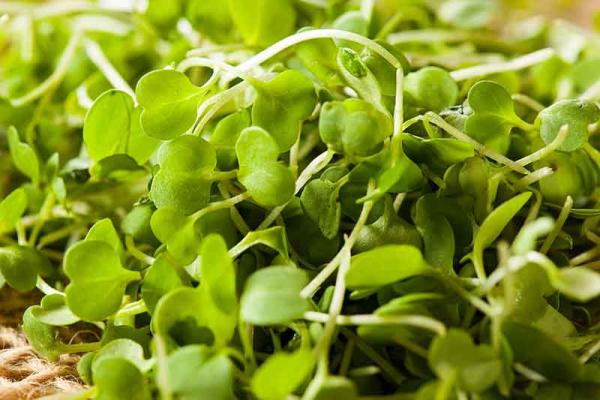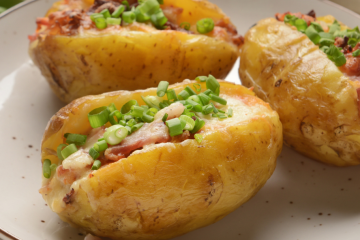Co-op Savings
Current Posts

Mighty Microgreens
Ahhh spring! Around town, the flowers are out and the trees are filling in— although sometimes covered in snow for a day here and there.
This is the time of year that farmers’ markets start up again and local produce starts hitting the Co-op Produce Department. As you may have noticed, greens are the first locally-grown goodies that are harvested in early spring, thanks to area greenhouses. But along with spinach and kale, some of the first leafy green harvests of the season are delectable, little microgreens.
Sprout-like in appearance—although quite a bit larger than your typical alfalfa sprout— these amazing little nuggets are as flavorful as they are nutritious and they are the perfect spring addition to salads and sandwiches.
Sometimes called “veggie confetti” or “specialty greens,” they’ve also become all the rave in fine dining establishments, as they are a bit pricier, and perhaps considered more of a trendy delicacy, than your typical greens. They’re also so cute and delicate that you hate to eat them, but once you do, you’ll be hooked.
Co-op West Main has locally grown microgreens on the shelves from two Gallatin valley growers. Cloud 9 Farm, based in Wilsall, produces bags of greens, along with Bozeman’s Gallatin Valley Botanical, which features different varieties, including spicy, radish and sunflower microgreens.
What is a Microgreen?
Essentially microgreens are a sprouted seedling that can come from a number of leafy green plants that germinate quickly, such as lettuce varieties, broccoli, kale, arugula, Swiss chard, cabbage, beet and mustard greens. Once planted, the stems and first leaves are cut about a month later, right after they sprout their first leaves (called cotyledons), when they are approximately two to three inches tall. Older than sprouts, but younger than baby greens like spinach, they are vibrant in color and in flavor.
Microgreen Nutrition
Researchers have just started looking at the nutritional benefits of microgreens, which have long been thought to be more potent and nutrient dense than more mature leaves. And this has recently been proven. In 2014, a study by the United States Department of Agriculture (USDA) analyzed the nutrient content of 25 different microgreen varieties. They found that, although each variety had widely differing amounts of vitamins and carotenoids ranging from vitamin C to beta carotene, the leaves were, on average, four to six times more nutrient rich than the more mature leaves of the same plant. Why is this the case, especially when these young plants haven’t had as much sun exposure or time to develop more vitamins? That’s still being studied today.
How to Use Microgreens
Microgreens can be used in the same way one would use a leafy green, but because they are so tender and flavorful, they work well as a salad topping or mixed in with other greens. They are also a great addition to a sandwich in place of other greens, and can be used as toppings for many dishes, from Mexican entrees to casseroles. Some people also toss them into a smoothie for a nutritional boost, or use them as a garish to soups and stews, added like a topping.

 Co-op West Main • Friday-8 am - 9 pm
Co-op West Main • Friday-8 am - 9 pm






